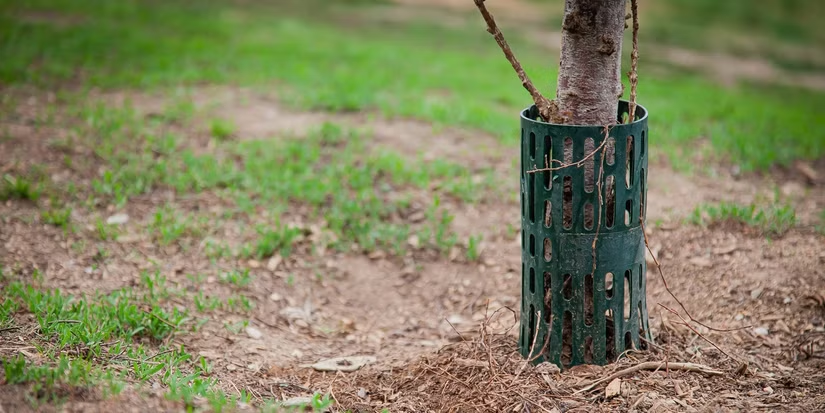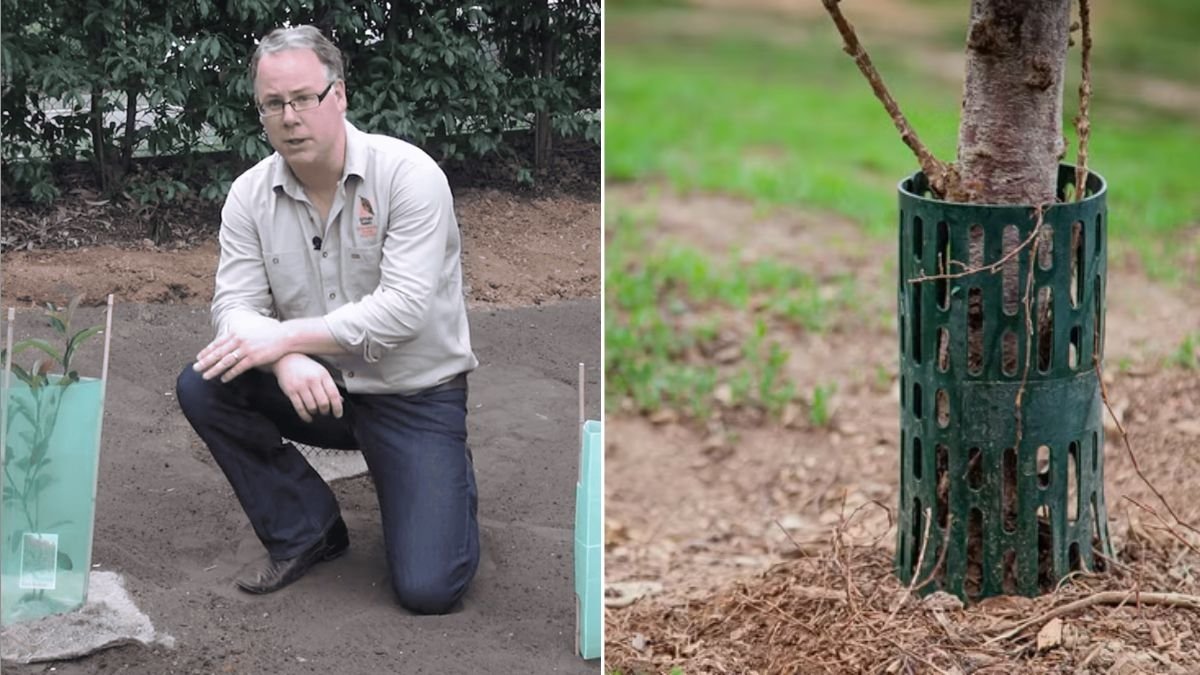Planting young saplings is one of the most rewarding steps in creating a healthy, vibrant landscape. Whether you’re growing fruit trees for harvests, shade trees for your yard, or ornamental varieties for beauty, protecting those tender first years of growth is critical. Unfortunately, animals—from deer and rabbits to rodents and livestock—often see new saplings as food, shelter, or scratching posts. Without proper safeguards, your hard work can be undone in a single season.
In this guide, we’ll walk through the main threats young saplings face, and practical, cost-effective strategies to shield them from animals while ensuring strong growth.
Why Animals Target Saplings

Young trees are especially vulnerable because:
- Tender bark and shoots are easy to chew.
- Leaves and buds are highly nutritious.
- Small size and flexibility make them perfect for rubbing or trampling.
- Lack of tough outer bark means damage can girdle and kill the tree.
Some of the most common animal culprits include:
- Deer: Browsing leaves, twigs, and rubbing antlers on trunks.
- Rabbits and hares: Chewing bark near the base, especially in winter.
- Rodents (mice, voles, squirrels): Gnawing roots and bark.
- Livestock or pets: Accidental trampling or chewing.
1. Install Protective Tree Guards
Tree guards are one of the simplest and most effective defenses.
- Plastic spiral guards: Wrap around the trunk to prevent gnawing by rabbits and rodents.
- Wire mesh cylinders: Provide sturdier protection against deer and larger animals.
- Perforated tubes: Allow airflow while shielding bark from chewing and sunscald.
Pro Tip: Ensure the guard extends at least 2–3 inches below soil level to stop rodents from burrowing under. Replace or widen guards as the tree grows.
2. Build Fencing Around Trees

Fencing is often the best long-term solution, especially in areas with heavy deer or livestock pressure.
- Individual tree fencing: A circle of welded wire or hardware cloth about 4–5 feet high and staked securely around each sapling.
- Deer fencing: Tall fencing (7–8 feet) around a whole planting area. Though costlier, it protects multiple trees at once.
- Electric fencing: Effective for farms or orchards where predators or livestock are an issue.
Pro Tip: Leave at least 2–3 feet of space between the tree trunk and fence to prevent deer from reaching through.
3. Use Repellents
Repellents can be a useful complement to physical barriers, especially for deterring deer and rabbits.
- Taste-based repellents: Make bark and leaves unappealing (often using bitter compounds).
- Scent-based repellents: Mimic predator odors, such as coyote urine.
- Homemade options: Garlic spray, soap bars hung from branches, or chili pepper sprays can deter browsing.
Pro Tip: Rotate repellents regularly; animals can become accustomed if the same scent or taste is used too long.
4. Mulch Wisely

Mulching around saplings helps retain moisture and regulate soil temperature, but it can also attract rodents if done improperly.
- Keep mulch away from the trunk: Leave a 2–3 inch gap to prevent hiding spots for voles.
- Use coarse mulch: Wood chips or bark are less appealing to small animals than grass clippings or straw.
Pro Tip: For added protection, lay down a wire mesh screen beneath mulch to discourage burrowing.
5. Prune and Maintain Saplings Properly
Healthy saplings are naturally more resistant to damage.
- Remove low-hanging branches that invite browsing.
- Keep the area around the base clear of tall grass or brush to reduce rodent cover.
- Water consistently during dry periods to prevent stress.
Pro Tip: Trees stressed by drought or poor soil are more attractive to wildlife, as their bark and roots are easier to chew.
6. Guard Against Winter Damage
Winter is one of the most dangerous times for saplings because food is scarce and animals grow desperate.
- Install guards before the first frost.
- Wrap trunks with burlap or tree wrap to protect against both animals and cold winds.
- Shovel snow away from trunks so rodents don’t tunnel up to bark hidden under snowdrifts.
7. Discourage Animals Naturally

Creating an environment that’s less inviting can reduce pressure on your young trees.
- Plant deterrent species nearby: Strong-smelling plants like lavender, daffodils, or marigolds repel deer and rabbits.
- Encourage predators: Owls, hawks, and foxes help control rodents naturally. Installing a raptor perch or owl box can make a big difference.
- Remove attractants: Avoid leaving pet food, compost, or fallen fruit near saplings.
8. Protecting in Larger Plantings
If you’re planting an orchard or reforesting an area, individual protection might not be feasible. In this case:
- Use tall deer fencing for the entire plot.
- Plant extra trees knowing some may be lost.
- Choose species less attractive to wildlife (e.g., evergreens are less appealing than fruit trees).
9. Monitor Regularly

No protection method is foolproof. Regularly inspect your saplings for signs of chewing, rubbing, or trampling. Early detection allows you to adjust before permanent damage is done.
Look for:
- Stripped bark near the base.
- Broken or missing branches.
- Tracks, droppings, or burrows nearby.
Pro Tip: A trail camera can help identify which animals are causing trouble, so you can tailor protection methods.
Final Thoughts
Protecting young saplings from animals requires a mix of prevention, monitoring, and maintenance. By combining physical barriers like guards or fencing with repellents, smart mulching, and environmental strategies, you’ll give your trees the best chance to grow strong and healthy.
Remember: those early years are critical. Once a sapling matures with thicker bark and sturdier branches, it becomes much less vulnerable. But until then, your vigilance is the difference between a thriving tree and one lost to hungry wildlife.
Safeguard your saplings today, and you’ll enjoy the shade, fruit, and beauty they provide for decades to come.






Leave A Comment